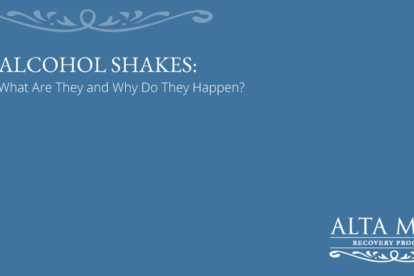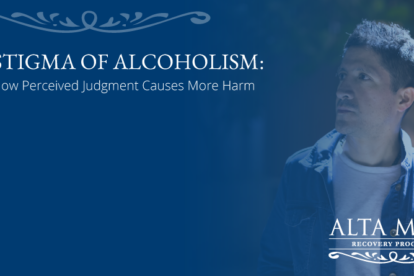
Cyclothymia and Drug Addiction
Cyclothymia, a bipolar-related disorder that causes milder mood swings between depression and hypomania, commonly co-occurs with substance use and addiction. Diagnosing cyclothymia is difficult, especially when co-occurring with substance use. The milder symptoms of cyclothymia mean that they are often overlooked and assumed to be caused by drugs or alcohol. However, diagnosing and treating both conditions is essential for the best outcomes, for a resolution of symptoms, and for long-term abstinence.
What Are Drug Addiction and Cyclothymia?
Cyclothymia, also known as cyclothymic disorder, is a mood disorder related to bipolar disorder. It is not common and is similar to bipolar disorder in that it causes mood instability and changes between depressed moods and euphoric moods. The differences between cyclothymia and bipolar disorder is that the former causes mood swings that are less severe, and these mood swings persist chronically for two years or longer.
Drug addiction, or substance use disorder, is a behavioral and brain condition characterized by out-of-control use of alcohol or drugs, in spite of it causing harm or dysfunction. Addiction may be to prescription drugs, illicit drugs, or alcohol, and anyone who misuses substances is at risk of developing this condition.
Co-occurring disorders are mental illnesses and substance use disorders that are present in an individual at the same time. Cyclothymia often co-occurs with substance use and addiction for a variety of reasons. The symptoms and mood swings of cyclothymia may lead someone to try drugs or alcohol as a way to cope and self-medicate. Or, alternatively, use of drugs or alcohol can worsen mood symptoms or increase the risk that someone already predisposed will develop the condition.
Cyclothymia Facts and Statistics
Bipolar disorder and the lower-grade form of this mental illness, cyclothymic disorder, both commonly co-occur with substance use disorders.
- All mood disorders, including depression, bipolar disorder, and cyclothymia, are the most common mental illnesses to co-occur with substance use disorders
- Cyclothymia itself is rare, occurring in only about 0.4 percent of the population
- Cyclothymia most often begins to develop in childhood or in adolescence
- It is difficult to diagnose cyclothymia because the symptoms and mood changes are less severe than those caused by bipolar disorder and because it is uncommon
- Diagnosing cyclothymia is particularly difficult in someone with co-occurring substance use disorder
- Treating both cyclothymia and addiction at the same time improves outcomes for patients. Untreated, cyclothymia symptoms can trigger relapse, even after treatment for substance use disorder.
Symptoms and Diagnosis of Cyclothymia and Drug Addiction
Because cyclothymia and addiction co-occur so often, it can be difficult to diagnose both conditions at the same time. The symptoms of each can be complexly interrelated, making the signs of cyclothymic disorder seem like the consequences of substance use. The diagnosis is more challenging than it is for bipolar I or II because cyclothymia symptoms are milder and can easily get overlooked or explained as effects of intoxication or withdrawal.
Diagnosing mood disorders in someone with substance use disorder must be done carefully. Assessment should be repeated after a period of abstinence to determine if symptoms really are caused by cyclothymia or if they were triggered only by substance use.
The diagnostic criteria for substance use disorder include:
- Uncontrollable use of a substance, including using more than intended or for a longer period of time than planned
- Trying to cut back on substance use, but being repeatedly unsuccessful
- Using a significant amount of time getting, using, and recovering from substances
- Experiencing strong urges and cravings for a drug or alcohol
- Failing to meet responsibilities because of substance use
- Using a substance even when it causes relationship problems
- Not engaging in normal activities in order to spend more time using
- Continuing with substance use in dangerous situations
- Using a substance in spite of physical and mental health problems
- Developing tolerance to a drug or alcohol
- Experiencing withdrawal symptoms when not using a substance
The symptoms of cyclothymia that are used to make a diagnosis include:
- Periods of depression that include fatigue, sadness, loss of interest in activities, guilt, difficulty sleeping or oversleeping, changes in eating habits, difficulty concentrating, and suicidal thoughts
- Periods of hypomania, characterized by racing thoughts, euphoria, increased self-esteem, talking a lot, impulsive behaviors and poor judgement, increased activity, irritability, and sleeping less
These up-and-down mood changes must occur on and off for at least two years and be present at least half of the time. Any stable periods in mood cannot last longer than two months and the symptoms and mood swings cannot be better explained by substance use, medical conditions, or other mental illnesses. They symptoms must cause significant impairment or distress.
Begin Your Recovery Journey Today
866-922-1350Causes and Risk Factors
The causes of cyclothymic disorder are not known but are thought to be related to genetic factors and family history, changes in structure or chemistry in the brain, and environmental factors like trauma and stress. There are not many known risk factors for cyclothymic disorder because it is so rare, but a family history or personal history of mood disorders, as well as substance use, may increase the risk of having the disorder.
Substance use disorder is caused by complex changes in the brain caused by repeated misuse of a drug or alcohol. However, not everyone who uses substances will develop an addiction. Genetics and environmental factors may contribute to addiction in those who do develop it. Other risk factors include family history, availability of drugs or alcohol, early use of drugs or alcohol, an unstable home life or family, and having a mental illness, like cyclothymia.
Some studies have found that the characteristics of cyclothymia and the personality characteristics of those diagnosed with it may uniquely predispose someone with the condition to substance abuse and substance use disorders. Traits of people diagnosed with cyclothymic disorder include impulsivity, sensation-seeking, and sensitivity to the effects of substances. These may all conspire to make someone with this condition more likely to seek out drugs or alcohol, and with ongoing use to develop an addiction.
Co-Occurring Disorders
Drug addiction and cyclothymia together are co-occurring disorders, but it is possible for someone struggling with both of these issues to have other complications. Other conditions or issues that may occur with these two or be triggered by them include anxiety disorders, suicidal thoughts or behaviors, injuries or illnesses resulting from impulsive behaviors, difficulties at work, school, or with family, and legal and financial issues.
Withdrawal and Detox
It may be necessary for an individual to detox and go through some treatment for substance use disorder before a definitive diagnosis can be made for cyclothymia. This allows the mental health professionals to evaluate someone without the influence of a drug or the effects of withdrawal.
The first step in treating a substance use disorder is to detox, a period of time during which the last of the drug leaves the body and the patient goes through withdrawal symptoms. Detox should always be done supervised. Withdrawal symptoms are not often dangerous, but they can easily lead to relapse. Withdrawal varies depending on the substance may commonly include:
- Irritability, depression, anxiety
- Restlessness, shakiness, tremors
- Difficulty sleeping, nightmares
- Nausea, vomiting, diarrhea
- Pain
- Sweating
- Weakness
- Difficulty thinking, feeling disoriented or confused
Detox can be medically treated or supervised to ensure safety and avoid relapse but also to help minimize withdrawal symptoms. Nutrition, hydration, supplements, and in some cases medications, can all be used to make patients going through withdrawal feel more comfortable.
Prognosis for Cyclothymia and Drug Addiction
Both cyclothymic disorder and drug addiction are considered chronic conditions that can relapse, even after long periods with no symptoms or no substance use. For this reason, both need to be treated over the long-term. It is also important to treat both conditions. Treating only substance use will not resolve cyclothymic symptoms, which can then in turn cause a drug or alcohol relapse. Treating just the cyclothymia may cause ongoing substance use, which may trigger a relapse of depression or hypomania. A private drug addiction treatment center providing integrated care for both conditions can make all the difference in outcomes.
Treatment for cyclothymia includes therapy, especially cognitive behavioral therapy, and medications when appropriate. There are no medications specifically for cyclothymic disorder, but those used for bipolar disorder may help stabilize moods. Therapy can help by guiding the patient to identify and change negative thoughts and behaviors and to recognize and better cope with triggers for mood swings.
Substance use disorder is mostly treated with therapy, but depending on the substance, medications may also be helpful. Rehab is useful for patients with substance use issues and a mental illness like cyclothymia because it provides a range of expert services. Patients can access a variety of therapies, group and peer support, alternative and creative therapies, medical care, holistic care with nutrition, exercise, and meditation, and recreation.
Careful screening for mental illness in patients struggling with substance use disorders is important for helping to resolve both issues. Treatment for one and not the other will only lead to ongoing recurrences. But, when both are treated and managed with long-term care, the outcomes are positive and most people can learn to live a healthier, more satisfying life.






